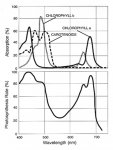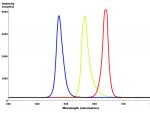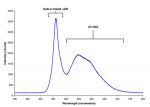sparkyr99
New member
- Joined
- Oct 13, 2010
- Messages
- 28
- Reaction score
- 0
- Points
- 0
- Location
- topeka kansas
- Country
- United States
Has anyone used L.E.D. lighting in their tanks? Will it work well with mosses? plants?
That's definetely a myth. I read a big thread on planted aquarium forum (polish) about that and saw many planted tanks running on LED light. Sadly i can't translate the posts from there, but i'm sure you can google some posts about that in english, on Aquatic Plant Central, or somewhere.Consumer grade White LED does not support plant growth (as they are not truly full spectrum white light! most are actually blue....)
It may sound kinda weird but then all the shame is on my english ability.LED parameters aren't awesome, only if we describe them by lumens, because they give more light in blue spectrum, for which our eyes are barely sensitive, and lumens are measured in green spectrum.
If we describe them in PAR, photosynthetic active spectrum (?), it will show that they're way more useful for plants, despite small brightness detected by our eye.



That's definetely a myth. I read a big thread on planted aquarium forum (polish) about that and saw many planted tanks running on LED light. Sadly i can't translate the posts from there, but i'm sure you can google some posts about that in english, on Aquatic Plant Central, or somewhere.
I tried to translate this, not sure if you can understand it...
It may sound kinda weird but then all the shame is on my english ability.
